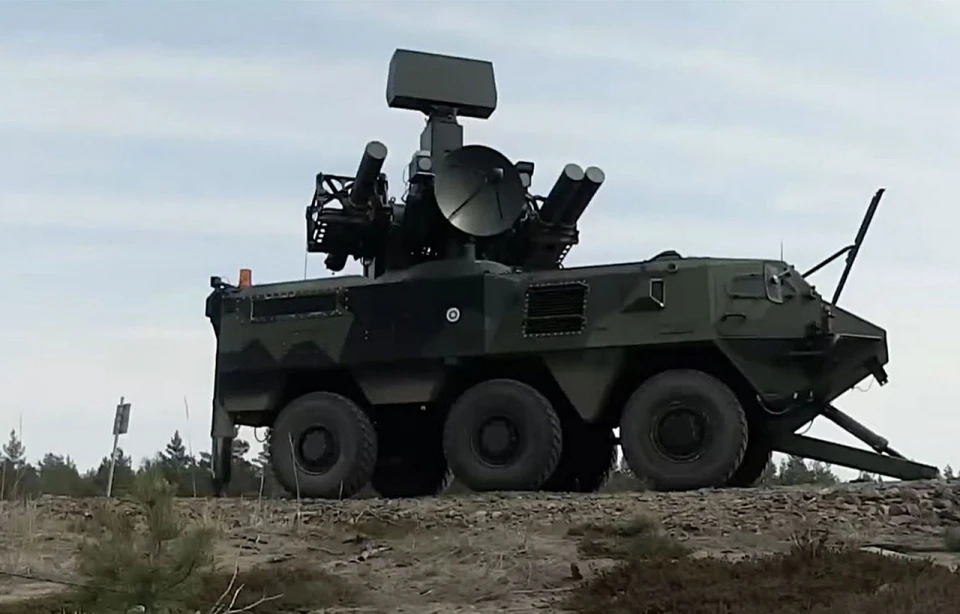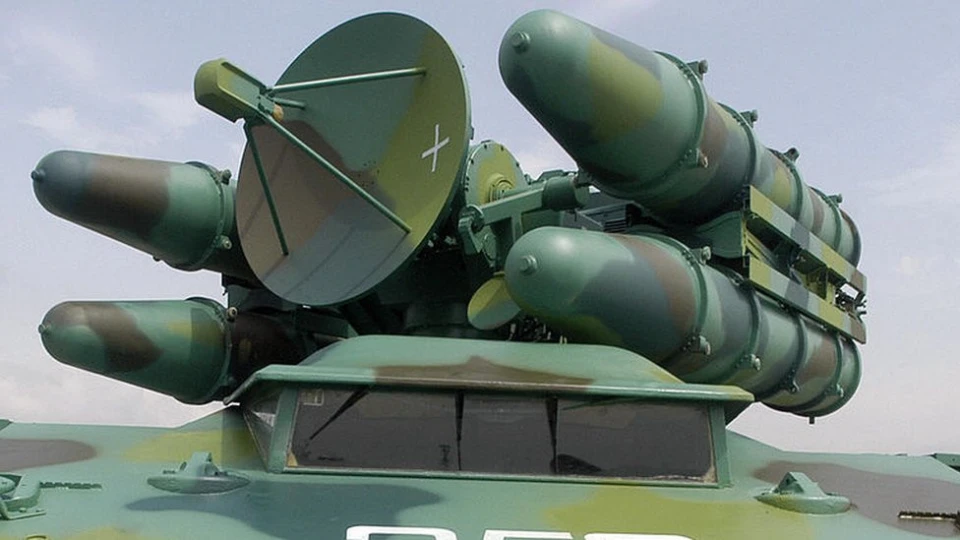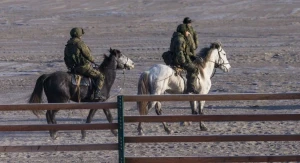
"All in one": exploring French Crotale air defense system designed to destroy airplanes, helicopters, cruise missiles, drones
Russia has increased the intensity of its missile attacks. Most of these missiles fail to reach their intended targets, largely due to the effectiveness of Ukrainian air defense systems. The Ukrainian Defense Forces possess a diverse range of air defense capabilities, acquired through donations from various allies. France, for instance, supplied Crotale air defense systems, among other equipment
The text covers the following topics:
- What is Crotale and the history of its development
- Crotale in Ukraine
- What we know about the Crotale air defense system
- Tactical and technical characteristics of the Crotale air defense system
- Missiles for the Crotale air defense system
What is Crotale and the history of its development

Photo: from open sources
The name Crotale translates from French as "rattlesnake". This is the name of the short-range all-weather air defense missile system developed by the French company Thomson-CSF/Matra. It is designed to combat air targets at medium, low, and extremely low altitudes.
Their history began in the 1960s, when South Africa contracted a French company to create a mobile all-weather air defense system specialized in low and extremely low altitudes. The first systems were called Cactus and were delivered to South Africa in 1971 after testing. In 1972, a system called Crotale was adopted by the French Air Force.
Crotale is a point defense system designed to cover both strategically important strongholds, control centers, missile launch positions, and direct cover for troop formations.
Over 40 years, the system has been modernized many times, creating many modifications, such as a mobile ground and shipboard version (serially installed on La Fayette frigates). Ukraine uses the newest modification, the Crotale NG. Since 1994, a modernized version of the Improved Crotale system has been produced, equipped with a new radar system with a phased array antenna.
The Crotale air defense systems are deployed in more than ten countries worldwide, including Finland, Greece, South Korea, Pakistan, and others. In South Korea, this system is referred to as the KM-SAM Chunma or Pegasus, while in Finland, it is known as the ITO 90. Notably, South Korea has 114 localized versions of the K-SAM Pegasus system. This widespread deployment underscores the accessibility of missiles for the air defense system when needed.
Crotale in Ukraine
Ukraine acquired Crotale air defense systems in the autumn of 2022 as part of the decision made during the Ramstein-6 meeting in Brussels. French Defense Minister Sébastien Lecornu officially announced the transfer of Crotales to Ukraine, emphasizing their effectiveness in countering drones and aerial bombardments.
France possessed 12 Crotale batteries, and Ukraine received two batteries in the new Crotale NG (Next Generation) modification. Observers on French television speculated at the time that it constituted a transfer of 3-4 Crotale systems to Ukraine.
By the end of 2022, the deployment of the air defense systems was completed in Ukraine. In March 2023, the press service of the Ukrainian Air Force Command released footage showcasing the operational effectiveness of one of the Crotale air defense systems in Ukraine. The video depicted the crew visually and via radar tracking an airborne target, followed by the successful launch of anti-aircraft missiles to intercept it. This demonstrated the capability of the Ukrainian Armed Forces in utilizing the French air defense system to neutralize enemy airborne threats.
Despite efforts by Russian propaganda to downplay the effectiveness of Ukrainian air defense, actual events indicate that these systems are significantly impeding Russian plans. For instance, military counterintelligence officers from the SBU uncovered two spies in Odesa whose primary objective was to locate the combat positions of the Crotale systems for subsequent targeting with Kalibr or Kinzhal missiles.
The detainees are a married couple, Russian citizens, who were "sent" to Ukraine by Russian military intelligence back in 2018. The husband served in the Russian army and took part in the war in Chechnya. The SBU caught the spies trying to transfer data to Russia.
What we know about the Crotale air defense system
Defense Express observers evaluate the Crotale as "quite effective short-range SAMs". Experts highlight that the Crotale NG boasts high-performance characteristics, enabling its deployment both in frontline areas for the destruction of enemy aircraft and helicopters, as well as in rear areas for intercepting cruise missiles.

The Crotale NG is designed to eliminate fixed-wing aircraft, attack helicopters, cruise and tactical missiles, and drones. The system can detect up to 30 targets, track 12 of the most dangerous targets simultaneously and fire on four of them at the same time.
The Crotale system is equipped with a thermal imager, infrared sensors, surveillance and targeting radars, and surveillance cameras. All the tools are integrated into a single mobile platform, i.e. the system is an all-in-one solution. Crotale's functions are automated to minimize the time between the first target detection and missile launch (an average of 6 seconds). The interval between missile launches is 2.5 seconds.
The Crotale system comprises 2-3 combat units and a control center, with combat vehicles mounted on a P4R (4×4) armored wheeled chassis. Each unit is manned by a crew of three personnel. The system cannot engage in combat operations while in motion; however, it can transition to a state of combat readiness in less than 5 minutes upon halting.
Designed to engage targets at low and extremely low altitudes, the SAM system can effectively neutralize air threats within a range from 6 kilometers to 15 meters above ground level. As part of its modernization, the Crotale has been equipped with features such as a friend/foe identification system, a television camera, and radio communication capabilities, facilitating information exchange between control centers within a range of up to 10 km (or 3 km between the combat control center and the launcher). Additionally, the upgraded Crotale system is outfitted with two Mistral missiles and a new radar system featuring a phased array antenna. With an antenna rotation speed of 60 rpm, the radar system can detect low-flying targets at a range of up to 19 km.
The range of enemy detection is up to 20 km.

Photo: from open sources
Tactical and technical characteristics of the Crotale air defense system
- Length - 6.22 m,
- Width - 2.72 m,
- Height - 1.93 m,
- Ground clearance - 0.45 m,
- Speed - 70 km/h,
- Range - 600 km,
- Range - 0.5-10 km,
- Height of impact - 15-6000 m,
- Reaction time - 5 seconds,
- Flight time at 8 km - 10 seconds,
- Number of missiles per launcher: 8 pcs,
- Maximum missile speed - 750 m/s
Missiles for the Crotale air defense system
There are two main types of missiles for the Crotale: R440/R460 and VT-1.
The R440/R460 is 2.89 m long and 15 cm in diameter. The weight of the missile is 80 kg, and the weight of the warhead is 15 kg. The range of R440/R460 missiles is 12 kilometers and they can climb to an altitude of 5.5 km.
According to the Militarny portal, the launch chassis of the Crotale does not carry R440 missiles. Instead, spare missiles are transported on a special vehicle, and reloading is accomplished using a light crane in just 2 minutes. The R440 missile itself is permanently stored in a transport and launch container for convenient deployment and storage.
The high-explosive fragmentation warhead is located in the central part of the missile body. The destructive radius of the fragments is 8 meters, and the flying speed reaches 2.3 km/s. The warhead is detonated by an infrared non-contact or duplicate contact fuze.
Ukrainian Crotale NGs are likely to use VT-1 missiles, which weigh 76 kg (the warhead weighs 13 kg). The missile is 2.35 meters long and 16.5 cm in diameter. The VT-1 can climb to an altitude of 6 or 9 km (depending on the modification), and its range is 11 to 16 km. The system can launch up to 8 VT-1 missiles with a radio command and guidance system. These missiles intercept targets at speeds up to 1800 km/h.
The missile hit probability is estimated at 80%. If two missiles are launched at an air target, the efficiency is 96%. The VT-1 maneuvers well and covers 8 km in about 10 seconds. The missile's warhead provides a strike radius of 8 meters.
The Defense Express portal believes that since the Crotale NG is also in service with Greece and Finland, there are unlikely to be any problems with replenishing the stocks of VT-1 anti-aircraft missiles.
- News













































